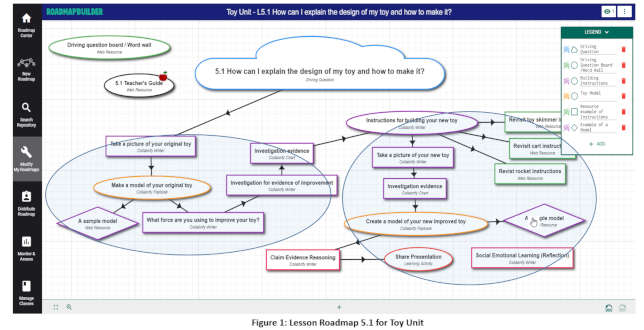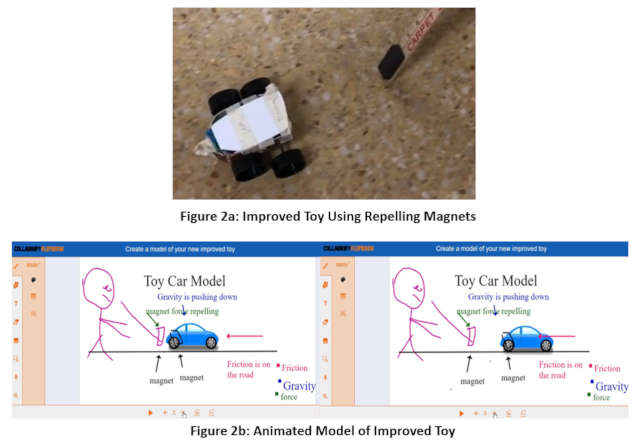A Deepish-Dive Into an NGSS-Aligned, Elementary School Lesson Roadmap
The March 14, 2018 blog was a quick overview of what NGSS — Next-Generation Science Standards — is all about. (If you want more information about NGSS, please watch our March 20, 2019 45 minute webinar, sponsored by T.H.E. — download the MP4 file here.) In this week’s blog post, we do a quick dive into the details of a particular NGSS lesson for 3rd grade. (And, if you want more information about this particular NGSS lesson, please watch another 45 minute webinar (March 26, 2019 — download the MP4 file here), again sponsored by T.H.E.). So, if you like to read, we have blogs; if you like to watch video, we have webinars. We aim to please!
Spoiler alert: While the two webinars mentioned above explore an elementary school science lesson, the next T.H.E.-sponsored webinar on NGSS (April 9, 2019) will feature a middle school NGSS-aligned science lesson.
OK! Enough with the advertising! First, let’s remind ourselves of the core ideas in NGSS, and then let’s dive into an example, elementary school, NGSS-aligned science lesson — implemented as a Collabrify Roadmap. (Sling that jargon! And, more to come Sorry, Sorry! )
The Next Generation Science Standards (NGSS) have put forth an ambitious vision for science education, one where students actually apply the knowledge they build over time as part of "three-dimensional science learning." What is three-dimensional science learning? In short, three-dimensional science learning involves students integrating and using together three dimensions of scientific knowledge in order to explain phenomena and/or solve problems. The following description of the three-dimensions takes quotes from our previous blog on NGSS:
- Disciplinary Core Ideas: "There are DCIs for each of the four major disciplines: physical sciences, life sciences, Earth and space sciences, and engineering (engineering, technology, and applications of science)."
- Crosscutting Concepts: CCCs are concepts that cut across the science disciplines, e.g., systems, cause and effect.
- Science and Engineering Practices (SEPs): There are eight SEPs, e.g., developing and using models.
But what does three-dimensional science learning actually look like in practice? How can teachers, curricula, technology, etc. support students as they engage in three-dimensional science learning? Indeed, having elementary students integrate the three dimensions can prove challenging. The various scaffolding techniques walk a fine line: they need to guide/support students but at the same time not rob the students of their agency and satisfaction in "figuring it" out on their own.
To address the dearth of NGSS-aligned K-12 curricula, Lucas Education Research has supported Dr. Joseph Krajcik and his colleagues at Michigan state University and at the University of Michigan (Spartan Green and UMich Blue can get along!) in developing NGSS-units for grades 3, 4, and 5. Those units use project-based learning (PBL) as their instructional model and integrate socio-emotional learning (SEL) activities as well. And, the curricular units integrate "multiple literacies" — language arts and math — as we shall see as we unpack the lesson in Figure 1. Told you there was going to be more jargon. <Smiley-face goes here>
Most importantly: the NGSS-aligned curricula produced by the Krajcik Team are available free at this URL. The materials are being offered under the Creative Commons license "CC-BY-NC-SA." You can explore the materials without logging in or creating an account. For example, click on "Resources" and check out the various learning-sets that are available. If you want to download a Roadmap, then the website will prompt you to login with a Google/Gmail address. (By summer, we will be enabling non-Google addresses to gain access to the Roadmaps. Stay tuned, as they say. NOTE: CN, who lives in Texas and is already planting her garden, hastens to point out that "summer" for ES, who lives in Michigan, is August. Ha Ha.)
The NGSS-aligned lesson that we will be exploring (Figure 1) — implemented as a Roadmap — is part of the "Toy Unit." The Toy Unit explores the "forces acting on objects" DCI. The Toy Unit takes 6-8 weeks to enact; it contains five learning-sets, where each learning-set includes 5-6 lessons. The lesson Roadmap in Figure 1 is the first lesson in learning-set 5, i.e., a lesson at the end of the curricular unit. The lesson Roadmaps are meant to be used in classrooms that are 1-to-1.

(We will be posting all Roadmaps for all 5 learning-sets by summer. We apologize for another delay — but all the lesson Roadmaps are being carefully scrutinized and vetted. However, in the repository now are curricular resources that can be downloaded, for free, that enable a version of the Toy Unit to be enacted via paper-and-pencil activities and minimal access to computers.)
In the lesson Roadmap depicted in Figure 1, students, working collaboratively in pairs, take a "toy that moves" that they built in an earlier learning-set, and improve their toy, e.g., make their toy cart go faster or go further. In NGSS terms, the students are tasked with "figuring out" the science around how toys move and then they must "use their knowledge" to design new toys. The gray oval on the left involves the learning activities dealing with the students’ initial toy, while the gray oval on the right involves learning activities dealing with the improved toy.
Two students, then, are working together on an improved toy (Figure 2a). They have mounted a magnet on the end of their toy cart (made from a milk carton) with the north pole of the magnet facing outward (can’t see that in the picture). They have also mounted a magnet, with the north pole at the bottom of a yard stick. Walking with the stick angled so the north pole is prominent and with the cart in front of the stick, the cart moves forward since the like poles repel. Pretty clever 3rd graders, wouldn’t you say?

So, how do all the forces work together to make the cart move? When designing their toys, students will have to consider their solution as a system (i.e., use a crosscutting concept) comprised of different parts that interact through forces (i.e., use disciplinary core ideas) and develop a model (i.e., use a science and engineering practice) of their solution. The unit asks that the students use Collabrify Flipbook to express their three-dimensional understanding. Flipbook is a free, device-independent, browser-based, simple drawing and animation tool. As Flipbook is "collabrified" two or more students can work together synchronously, each drawing on his/her own computing device and contributing to the one-shared drawing.
The two students, then, each have the Roadmap depicted in Figure 1 on their respective computing devices. In the gray area on the right, they each click on the orange-lined, oval node entitled "Create a model of your new improved toy" — the mouse-hand is in the right corner of the oval node. A new tab in their browser opens and the students are now working in Collabrify Flipbook. Figure 2b contains two of the five frame animated model created by the two students collaborating on the "magnet repelling" tactic for improving their moving toy. The students snapped up an image of a car from the web to represent their cart. The initial forces they have drawn are accurate. As the car "moves" — frame 2, frame 3, etc. the students are not as careful, however, about updating the force indicators as they should be.
The animation component of Flipbook can add significant value to the students’ understanding. The students can compare what happens to the real, physical cart with how their animation works. And, if the students did the model before building the cart, the students might be able to predict what would happen to the real, physical cart. In either case, change over time is hard to represent using static drawings using paper-and-pencil. In contrast, Flipbook’s animation component enables the students to more easily and accurately represent change over time.
Note, in the next lesson (L5.2), the students need to be able to explain to other students, e.g., 2nd graders in their school, how those other students might be able to build the improved toy that was built in L5.1! By conscious design, the lessons in the learning-sets of the Lucas-sponsored curricula employ project-based learning (PBL) and employ socio-emotional learning activities (SEL). But, in this already long blog post, we will ignore the PBL issues — and we will let you watch the March 26th webinar to see/hear about the rationale underlying the various other learning activities in the Roadmap. But we simply must relay a couple of "priceless" 3rd grade student comments with respect to collaboration.
When the students click on the red-outlined, rectangle entitled "Social Emotional Learning (Reflection)" Collabrify Writer opens up. (Like Flipbook, Writer is a free, device-independent, browser-based, simple, multi-media writing tool designed expressly for K-5.) Students are then asked to reflect — by themselves this time — on their collaboration experience. Here are two comments — representative comments, in fact:
- "I learned working in a group is a journey. You might not be friends with the people in your group. You just be nice and be their friend even if you don’t want to be their friend. Be thankful that you get to be in a group."
- "I think that one of my partners should be moved to another group. They never follow the rules. I get so mad at them sometimes. It aggravated me!"
One might be hard pressed to guess that the above observations came from 3rd graders!
Yes, the Next Generation Science Standards (NGSS) have put forth an ambitious vision for science education. But, as we tried in this blog to demonstrate, when provided with carefully constructed curricula, teachers — and students — can successfully engage in NGSS three-dimensional science learning!
For a deeper dive into the Roadmap in Figure 1 than we can provide in this short blog, do review our webinar from March 26, 2019. And, do join us on April 9, 2019 for another webinar on NGSS — this time we will be reviewing a middle school lesson!